Designed by father and son Dan and Tristan Halstad and inspired by Tristan’s dream of becoming a marine biologist, AQUA: Biodiversity in the Oceans from Sidekick Games (Bloom Town) and The op is a beautiful and entertaining tile placement game. Illustrated by French artist Vincent Dutrait, the game challenges 1-4 players to try and build the best coral formations with the most biodiversity over 17 rounds.
With multiple variants, challenge scenarios, and even solo play, AQUA is a super enjoyable and satisfying board game!
What’s In The Box?
AQUA is a hefty game with 70 coral tiles, 72 small animal tiles (in six colors), 15 large animal tiles, 24 ecosystem tiles, 1 sea snail first-player token, 4 hot spot tiles, a scorepad, and rulebook. Small animals include the long-snouted seahorse, box jellyfish, clownfish, trapezia crab, green turtle, and crown-of-thorns starfish. Large animals are the humpback whale, the manta ray, dugong, blacktip reef shark, barracuda, whale shark, reef octopus, bottlenose dolphin, hammerhead shark, and moray eel.
This might be the best-packaged game that I have seen in a long time. Instead of a ton of plastic baggies, AQUA comes with six cardboard cutouts that fit together to make sections in the box for the various pieces.
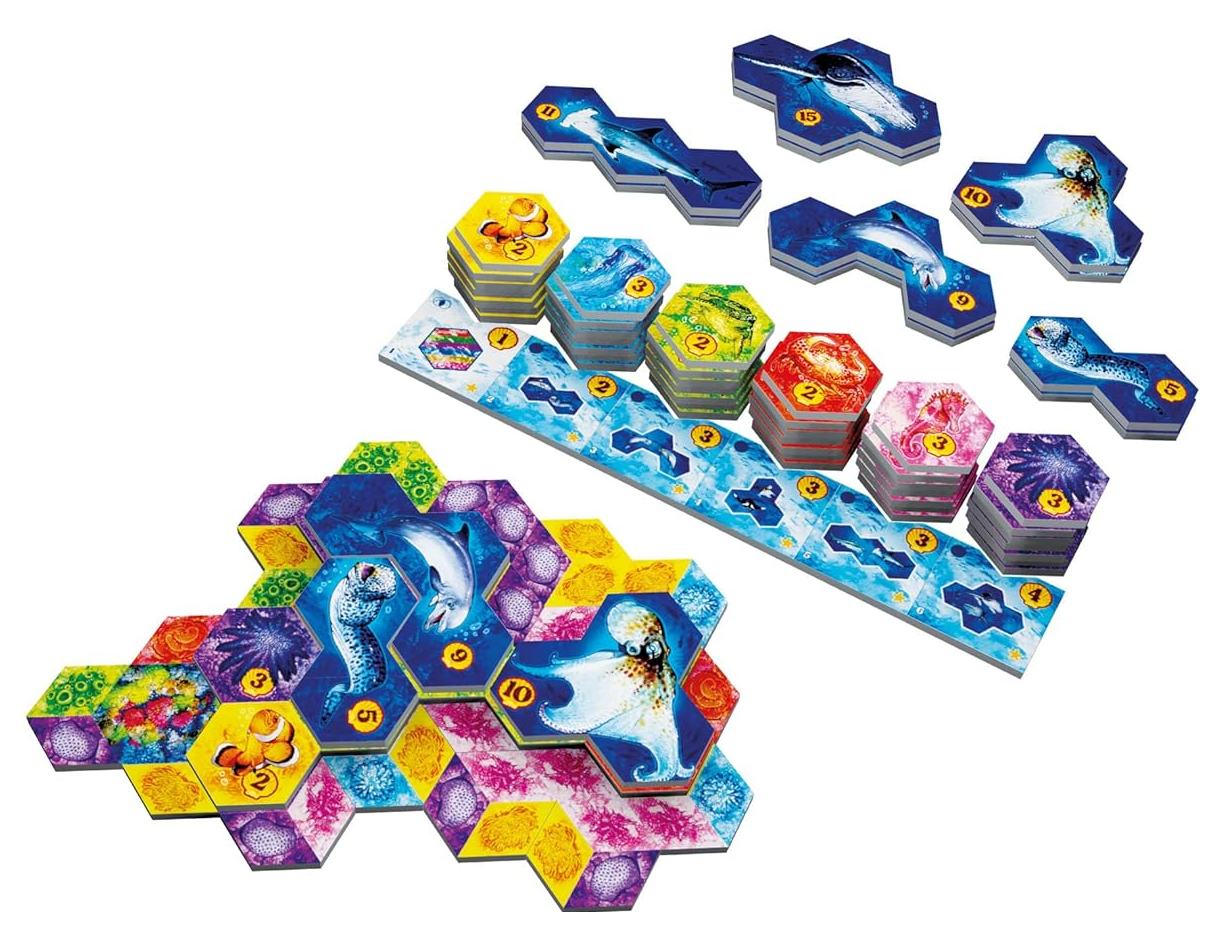
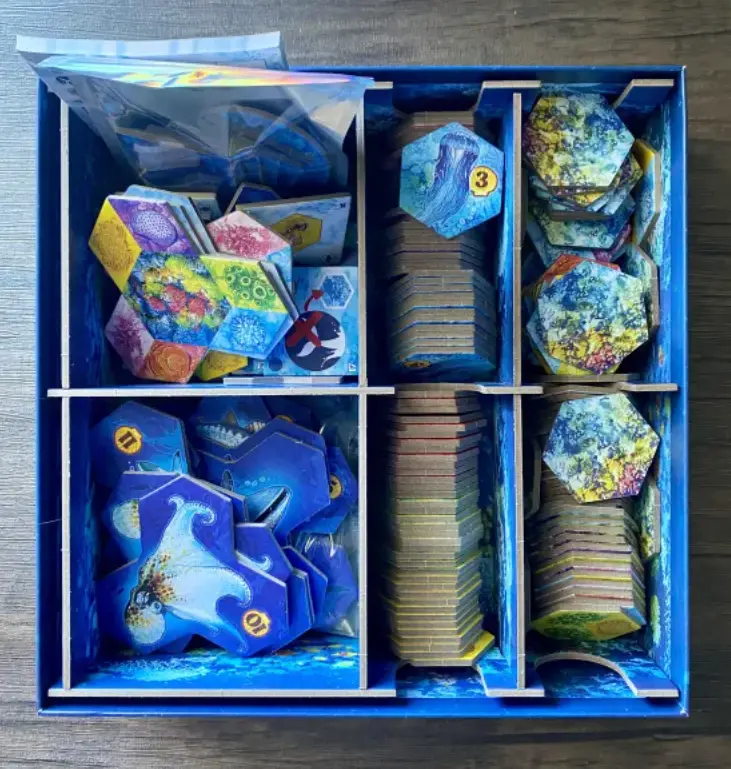
I used two baggies that I had left over from other games to store the pieces regularly used in each game, and pieces that I’m unlikely to use (for 4-player games) for ease of unpacking each new game.
The quality of the cardboard cutouts themselves is spectacular and I loved that the rulebook was also made of recyclable material. Board gaming by virtue of having one quintillion pieces requires a lot of extra faff so it’s great to see more truly recycled materials and thoughtfulness in packing! The rulebook also provides information on each of the animals.
How’s It Play?
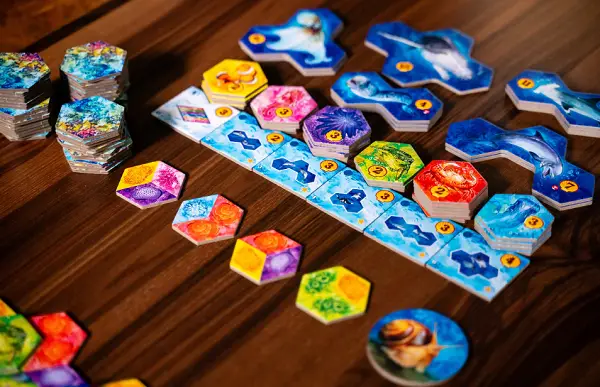
Gameplay in AQUA is pretty simple, but requires strategy and thinking ahead. Since there are different end game bonuses, you can’t focus on just getting tiles down.
In AQUA, players each receive a hot spot tile that serves as the starting point for each coral reef. Six ecosystems are placed in a line and the six small animals are placed at random above each Ecosystem making each game completely different.
That small animal is now native to the ecosystem affecting end game scoring. The large animals are sorted in descending point value with highest on top and placed near the small animals. All the coral tiles are shuffled with a certain number removed based on the number of players, and the game is ready to start!
In each turn, players work through three phases. First, take and place a Coral tile from the market. You must match at least one side of the coral tile with an already placed tile in your reef. Green to green or pink to pink, for example.
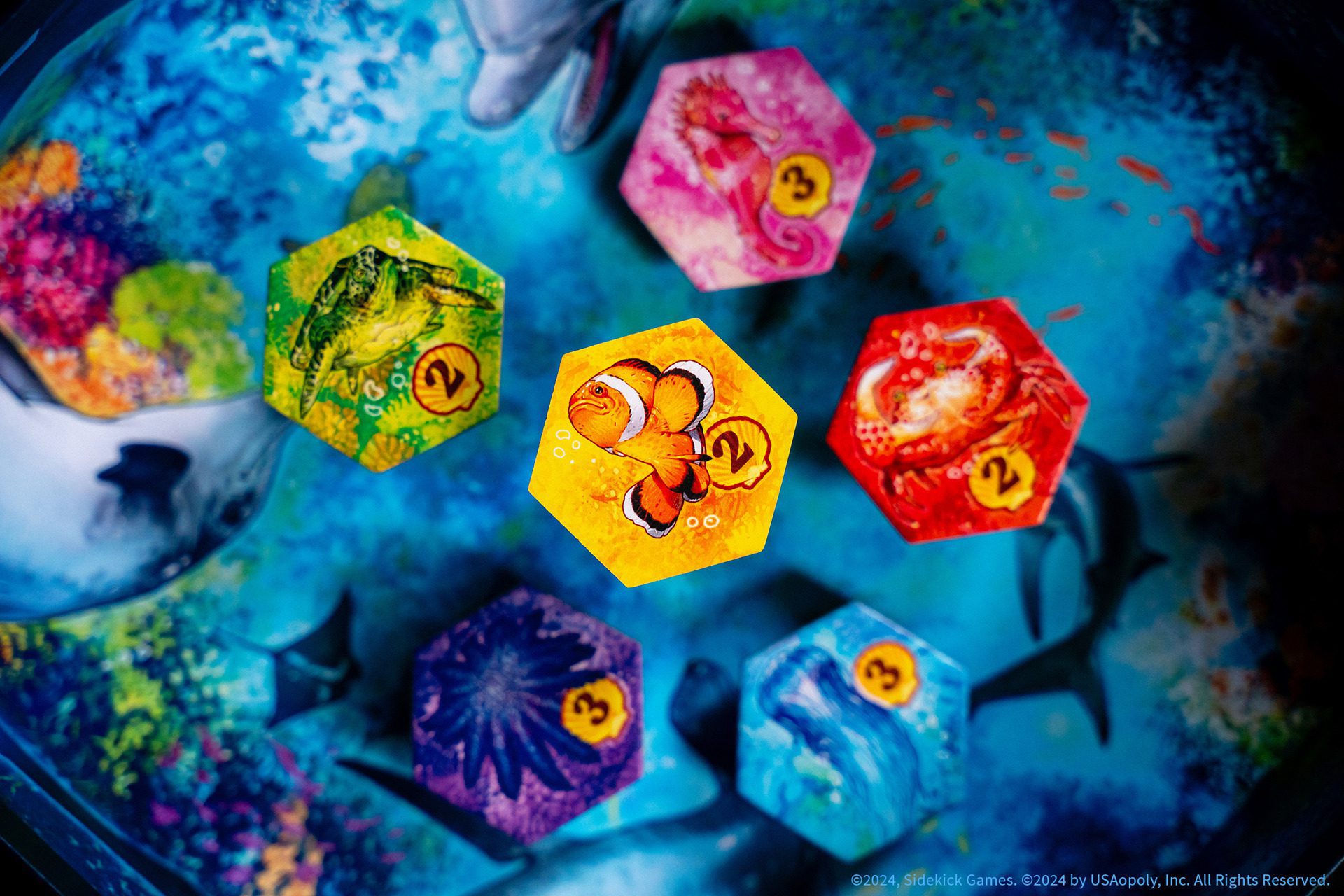
If placing the tile creates a hexagon, you’ve created a habitat and must immediately attract a small animal that matches the color of the habitat. You’ll also be trying to create reefs with four or more of the same color coral. If placing the small animal led to establishing biodiversity (multiple different small animals next to one another), you can now attract a large animal.
Gameplay continues until 17 rounds have occurred! Players must then score and whoever has the most points wins. Scoring includes large animals, small animals, reefs, and ecosystems (based on the criteria on the ecosystem tile). There’s a lot of counting in this game so the score pad is quite helpful.
AQUA Solo Play
I mentioned that AQUA also comes with a bunch of scenarios which are pre-built scoring setups with extra objectives and that there’s a solo play option. In this version, the game plays just like in the multi-player version but the two coral tiles that are in the market each round are discarded with the goal being to score as high as possible. You can use any six of the Ecosystems and keep all the large animals.
I’m always looking for solo play games and I really like the large number of variants possible and that the scoring can be adjusted to be friendly to younger players. It would take me a very, very long time to play every modification and scenario while attempting to meet one or more of the 25 challenges which makes this game a great investment.
The Verdict?
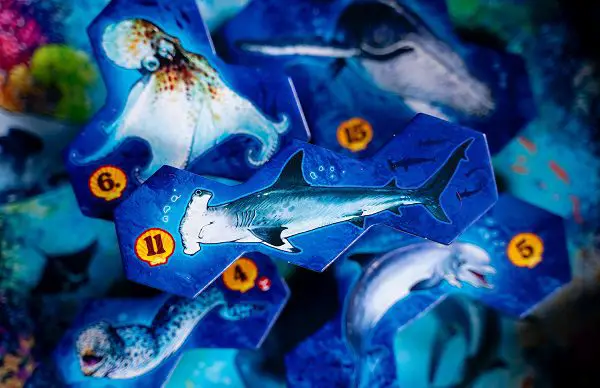
I was immediately drawn to the art and design in AQUA but I’m happy to say that the game itself is a ton of fun and truly uses its theme to the strongest extent possible. My friend and I played multiple games with both the core Ecosystems and Ecosystems drawn at random.
Even when you’re strategizing for ecosystem scoring, it doesn’t always work, and that’s the beauty of AQUA. You don’t quite know what might happen but it’s genuinely a ton of fun to try to one-up one another while building the habitats and reefs. In some games, we didn’t have a single reef, and in some, we had three!
I can’t wait to play again with one of the variants, modifications, and challenges to see how the game shifts, and I know this game is one we’ll pull out again and again.
You can grab AQUA: Biodiversity in the Oceans from The OP and at your FLGS at an MSRP of $39.99.
Images and review copy courtesy of The Op
Have strong thoughts about this piece you need to share? Or maybe there’s something else on your mind you’re wanting to talk about with fellow Fandomentals? Head on over to our Community server to join in the conversation!

